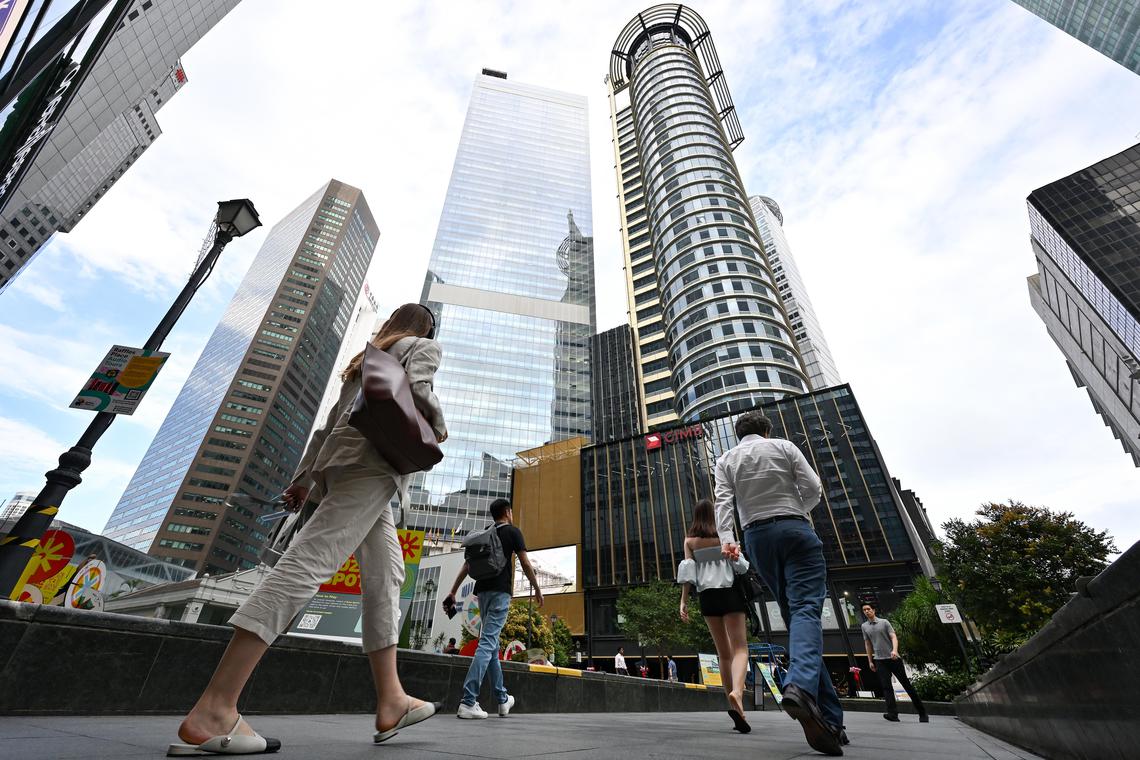SINGAPORE – The labour market is showing some bright spots, with total employment rising and retrenchments holding steady.
The number of jobs in Singapore grew by 8,400 in the second quarter of 2025, much higher than 2,300 in the previous quarter, and up from 7,700 in the last quarter of 2024.
There were more jobs for both residents – Singaporeans and permanent residents – as well as non-residents in the second quarter, according to preliminary data released by the Ministry of Manpower (MOM) on July 30.
The growth in the second quarter is, however, lower than the 11,300 jobs added in the same period in 2024.
Still, MOM said the data reflected a resilient labour market supported by continued economic growth.
Based on advance estimates by the Ministry of Trade and Industry, Singapore’s economy
grew 4.3 per cent year on year in the second quarter
, extending the 4.1 per cent growth in the first quarter.
DBS Bank senior economist Chua Han Teng said growth in the first half of 2025 was mainly buoyed by the front-loading of exports, as companies rushed to ship goods ahead of anticipated US tariff hikes.
But the bank expects this resilience to be increasingly tested in the second half of the year.
Resident employment continued to increase in sectors like financial services and health and social services, said MOM.
But outward-oriented sectors such as professional services, and information and communications saw further decline.
National Trades Union Congress assistant secretary-general Yeo Wan Ling said in a Facebook post on July 30 that NTUC is “keeping a close watch on these sectors where resident employment is still softening”.
The retail trade sector also saw a drop in resident workers as employers continued to release them after the seasonal hiring for year-end festivities in the last quarter of 2024.
Mr Callam Pickering, an Asia-Pacific senior economist at jobs platform Indeed, said: “It is clear that hiring momentum is uneven, with stronger gains in engineering and select healthcare and science-related fields, and weakness in others.”
MOM said the growth in non-resident employment was driven entirely by work permit holders, especially in the construction sector. The rise was also seen in sectors like administrative and support services, and health and social services.
Resident and citizen unemployment rates in June stood at 2.9 per cent and 3 per cent respectively.
“After dipping slightly in April and May, both resident and citizen unemployment rates rose slightly in June, returning to levels seen in March,” MOM said, noting that the rates remained within non-recession levels.
There were 3,500 retrenchments between April and June, a figure that remained stable or lower across most sectors. The ministry said business reorganisation or restructuring is the top reason for retrenchments.
For every 1,000 employees, 1.4 people were retrenched in the second quarter, slightly lower than 1.5 in the preceding quarter.
MOM noted that global economic uncertainty is expected to persist in the months ahead and may weigh on hiring and wage growth, particularly in outward-oriented sectors.
Business sentiments remained cautious. In an MOM poll conducted between April and June, there was a slight dip in the proportion of firms expecting to hire from 44 per cent in the second quarter to 43.7 per cent in the third quarter.
The proportion of firms intending to raise wages also fell, from 24.4 per cent to 22.4 per cent.
Declines in wage expectations were observed in outward-oriented sectors such as financial and insurance services, professional services, and transportation and storage.
Labour marketRetrenchmentJob cutsMinistry of ManpowerEmployment

